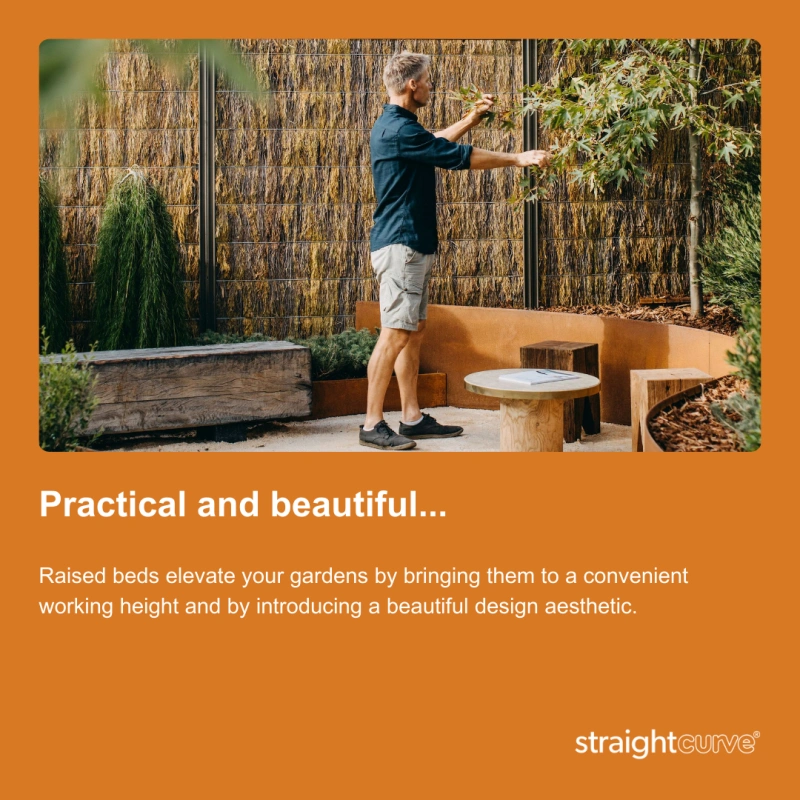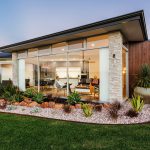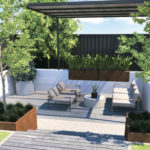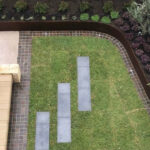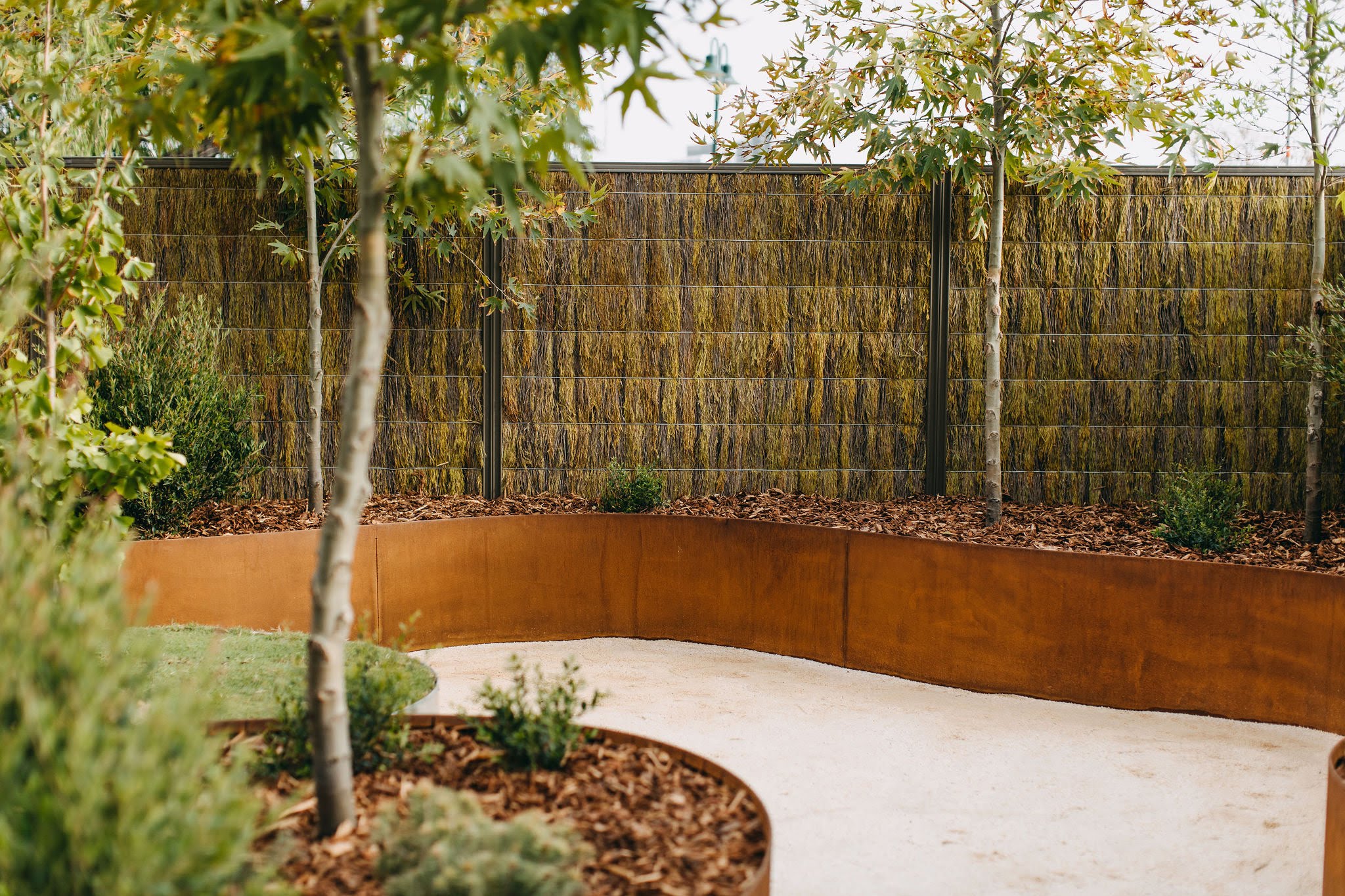
An Essential Guide to Raised Garden Beds | Straightcurve Steel Garden Edging
Introduction.
In Australia, in 2024, the term “Raised Garden Beds” is being searched on Google around 22,000 times a month. Since you found your way here, there’s a fair chance at least one of those searches was yours. Either way, if you want to know more about raised bed gardening, you’re in the right place.
This essential high-level guide includes everything you might need to know about choosing and using raised garden beds, including; useful definitions, applications, materials, benefits, things to be aware of, methods of construction, and recommendations, plus a practical checklist and companion planning document that will help you shortlist the perfect option for your needs.
Hint: To get the most out of this article, download and make a copy of this project planner document and add your notes as you consider what options will work best for you and your garden.
Full Disclosure – At Straightcurve, we design and manufacture a high-quality range of modular steel garden edging products. This includes a range that’s specifically designed to help DIY gardeners and professional landscapers build beautiful, functional, and long-lasting raised garden beds in a variety of shapes & sizes.
- Throughout this article you’ll see examples of our raised garden bed products used in a variety of ways – these images are included to spark your imagination and give you some ideas.
- If you decide you like the characteristics and benefits of galvanised steel or weathering steel (aka corten) raised garden beds, you’ll find useful resources and links to access more info about our range at the end of this article.
- That said, the purpose of this article is not to convince you to choose our products but to give you everything you might need to choose a raised bed option that works best for you and your garden.
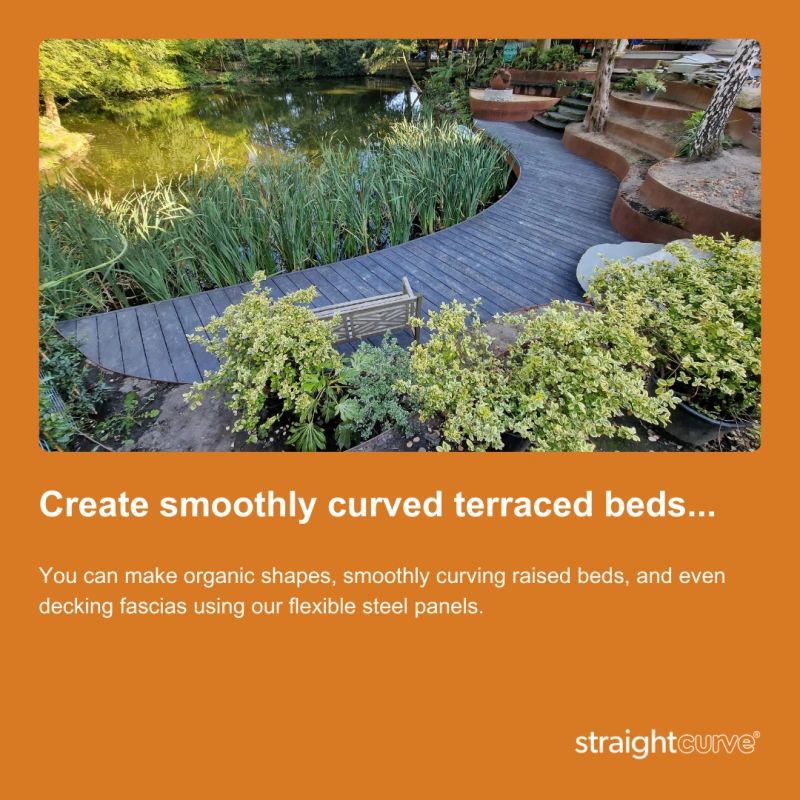
Definition: What is a Raised Garden Bed?
Let’s start with some definitions.
“A raised garden bed is a container filled with soil that is elevated above ground level. It creates a controlled environment to help plants to thrive whilst making gardening more efficient. It can also be used to add form, structure, and visual interest to your garden.”
Once built, the containers used to create raised beds are sometimes referred to as garden boxes, planter boxes, or raised planters. Raised bed containers can be connected to the existing ground, or be entirely self-contained and set up on legs that keep the soil and plants completely disconnected from the earth.
Raised beds are commonly built using wood such as sleepers, lumber, or logs. Other popular construction methods include stone, bricks, concrete, composite materials, and metal.
In a home garden, raised beds are often used as a convenient way to grow food such as fruits, vegetables, and herbs. Building raised beds is also an effective way to introduce multi-level planting, create structure, add texture, and build tiers or terraces into sloping gardens.
- Action point: What kind of raised bed do you want to build and what will its main purpose be? Make a note of this in your project planner as this will have an influence over which options are most suitable for you.
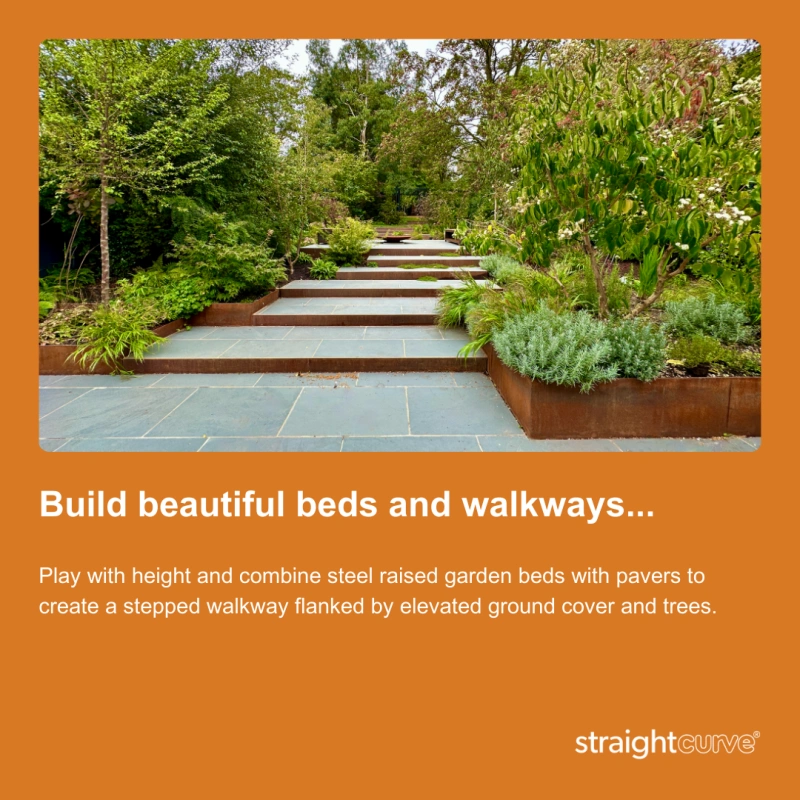
5 Reasons To Build Raised Garden Beds.
Here are some of the common and not-so-common reasons you might choose to build raised beds in your garden.
1. To grow food: Growing food is a major reason why people choose to build raised garden beds. With a raised bed, you have more control over the soil quality and can easily tweak it with compost and other organic matter. This allows you to create the perfect conditions for growing fruits, vegetables, and herbs. Raised beds also provide better drainage, preventing waterlogged soil that can harm plant roots.
2. To improve aesthetics and curb appeal: Raised garden beds can add beauty and structure to a garden. They provide defined borders and can be designed in various shapes, sizes, and materials to complement the overall landscaping scheme and enhance the visual appeal of your outdoor space. When done well, this can enhance your enjoyment of your garden and increase the value of your property.
3. To retain a sloping site: On sloping sites, products used to build raised garden beds (such as modular weathering steel panels) can be repurposed to act as retaining structures to create multi-tiered beds, garden steps, or terraced gardens.
4. To highlight garden features: The materials used to build raised garden beds can also be used to elevate feature planting, create focal points, or highlight specimen trees. When used in this context a raised bed could also be described as a planter or tree ring.
5. To create sunken beds: Whilst this may seem like the exact opposite of a raised garden bed, the materials or products used to create raised garden beds (such as galvanized or corten steel panels) can also be used to create sunken garden features such as tree rings, courtyards, or fire pits.
There are as many creative applications for raised garden beds are there are styles, shapes, and material choices. So, what could they do for you and your garden?
- Action Point: Open your project planner and make a note of the reasons you want to build a raised garden bed. This will help you to create a focused shortlist when the time comes to pay your money and make your choice.
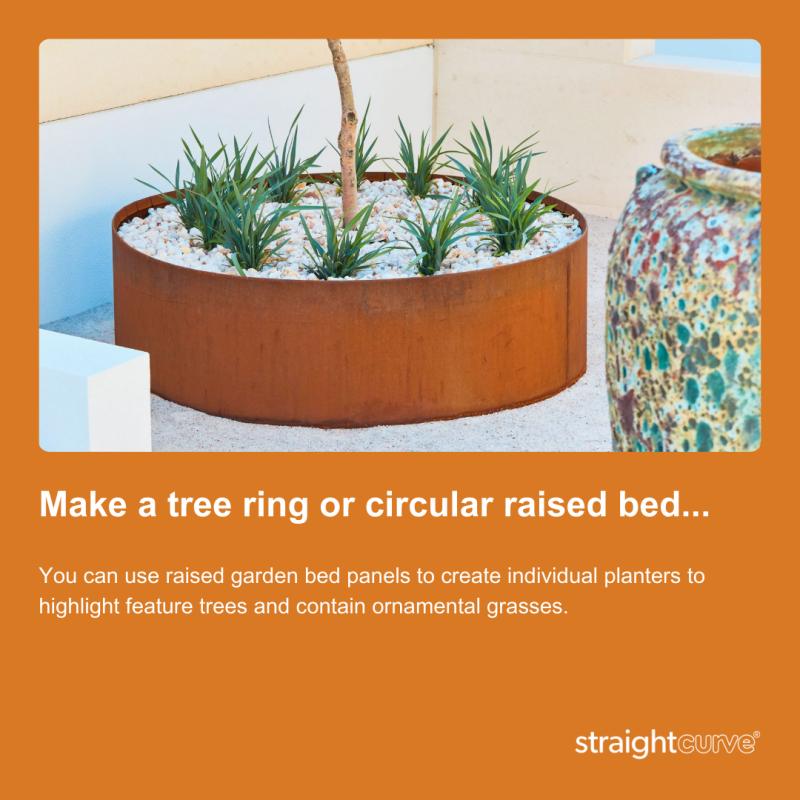
7 Benefits Of Raised Bed Gardening.
Here are some of the key benefits of raised bed gardening and their advantages compared to inground gardening:
1. Improved soil quality: One of the primary reasons for building raised garden beds is to have greater control over your soil quality. By creating a contained space, you can add specific types of soil, compost, and other organic matter to create the ideal growing environment for your plants. This is particularly beneficial in areas with poor soil quality or where the ground is rocky, compacted, or contaminated.
2. Fewer weeds & pests: Establishing your raised beds with fresh soil and keeping that soil separate from the rest of your garden (with a suitable liner) makes it harder for pests and weeds to get into your beds. The tall sides of your raised beds can also help to keep slugs, snails, pets, and native animals out of your plants – it’s also much easier to tend to the odd weed or bug when your beds are at a working height.
3. Better draining soil: If your garden is prone to flooding or water pooling after rain, a raised garden bed will help you combat over-saturated soil. Build your bed up to a height of 400mm or more for optimal drainage and to prevent plants from getting waterlogged during wet conditions. You can also use a “lasagne” layering technique in your beds to improve soil drainage even further.
4. Aesthetically pleasing order & structure: Compared to ground-level planting which can look a bit chaotic (depending on what you’re growing and how you’ve grouped your plants), raised garden beds create a sense of order and structure. The fact that your plants are neatly grouped in a defined area or container, can be pleasing to the eye. And if the materials and construction methods you use to build your raised beds are beautifully designed in their own right, then you have form and function working for you.
5. Greater choice of location: When you build a raised bed, more often than not, you’re starting from scratch and creating an entirely new and self-contained growing environment. This means you’re not restricted to only planting where there is suitable soil or existing bare earth. In other words, you are free to build and locate your raised garden beds wherever there are favourable sunlight and wind conditions.
6. Suitable for a wider range of gardeners: Whilst there’s more involved in initially setting up a raised bed, the process of raised bed gardening is easier and more accessible to a wider range of gardeners. Whether you’re a beginner or a life-long gardener, whether you’re strong and agile or a little more ergonomically challenged, you’ll find raised bed gardening is far easier on your body than inground gardening. There’s no need to bed down low or crawl on your hands and knees when your plants are at a more easily accessible height.
7. Extended growing season – Raised gardens produce a warmer growing environment and offer better soil drainage than ground-level gardens, which means, you can plant earlier (in the spring) and grow for longer (in the autumn). Raised beds give you more control over the growing environment allowing you to grow more over an extended season, which is especially handy if you’re producing food.
- Action point: Which of these benefits are relevant to you? Can you think of other ways raised beds will improve your life and your garden? Make a note of what’s important to you in your project planner to help you build a checklist you can use to find your best options later.
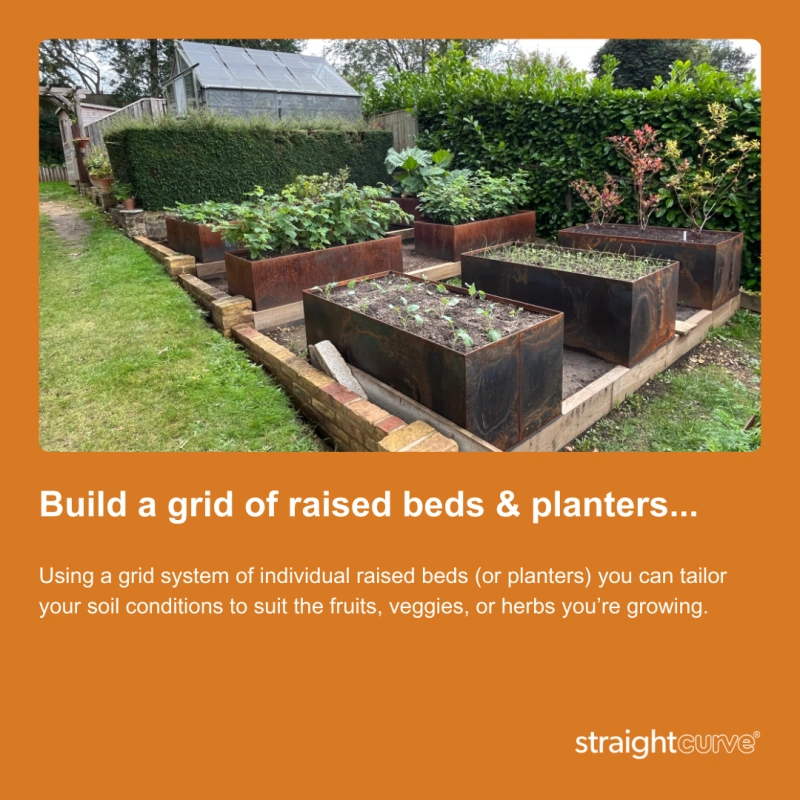
Potential Downsides.
Here are some of the downsides and things to be aware of when considering raised garden beds:
1. Setup, maintenance, and replacement costs: Setting up and maintaining raised garden beds can be more costly than conventional inground garden beds. The initial setup will require some investment in materials such as wood, stone, or steel to build the container, though the long-term benefits often outweigh these expenses. Additionally, there may be ongoing maintenance costs involved, such as replenishing soil or compost over time. Another potential downside to consider is the need to regularly replace the materials used to contain the raised beds. Some materials (like untreated timber) can deteriorate or rot over time, requiring replacement.
2. Water requirements: One of the key benefits of raised beds is that they offer better drainage than inground garden beds. But that can mean they need more water than conventional inground plots, which can add to your “running costs” or if not accommodated, can lead to your plants failing. Keep in mind that the amount of water you need will vary depending on your local climate, soil type, the size and shape of your beds, the plants you’re growing, and whether you use mulch to protect the topsoil and reduce evaporation.
3. Unsuitable materials: If you’re growing edibles you’ll want to avoid certain materials like treated timber. Especially those treated with Arsenic and other toxic chemicals that could leach into your soil and make their way into your vegetables, fruits, or herbs.
4. Sub-optimal design: The primary purpose of your raised garden bed should heavily influence how it’s designed and built. If you’re building a raised bed to grow and harvest fruit, veggies, or herbs, it’s important to consider the size and shape of your beds, so you can reach the soil and plants without stretching, straining, or worse having to step into the garden bed. If you’re building raised beds to elevate your planting for visual impact, or to retain a tiered garden on sloping land, you’ll want to consider the structural integrity of your chosen layout and the materials you plan to build with.
5. Material failures: It’s important to be aware of the limitations of the materials you’re considering – if for no other reason than to go into your build with your clear expectations. For example, some untreated timbers can rot or splinter over time, and some treated timbers are more rot-resistant but unsuitable for use with edibles. Brick, concrete, and stone can crack and crumble long mortar lines over time (especially when built on shifting soils). Composites can warp and split in the sun. Mild steel will rust and disintegrate over time. And even within these material categories, many variables will affect the longevity of your raised beds, such as whether the material (or product) has been optimised for use in varying Australian climates.
- Action point: Make a point of talking to your local garden centre, landscape supply store, or landscaper about whether the products you’re considering would be suitable for your needs. Jot down your findings in your project planner.
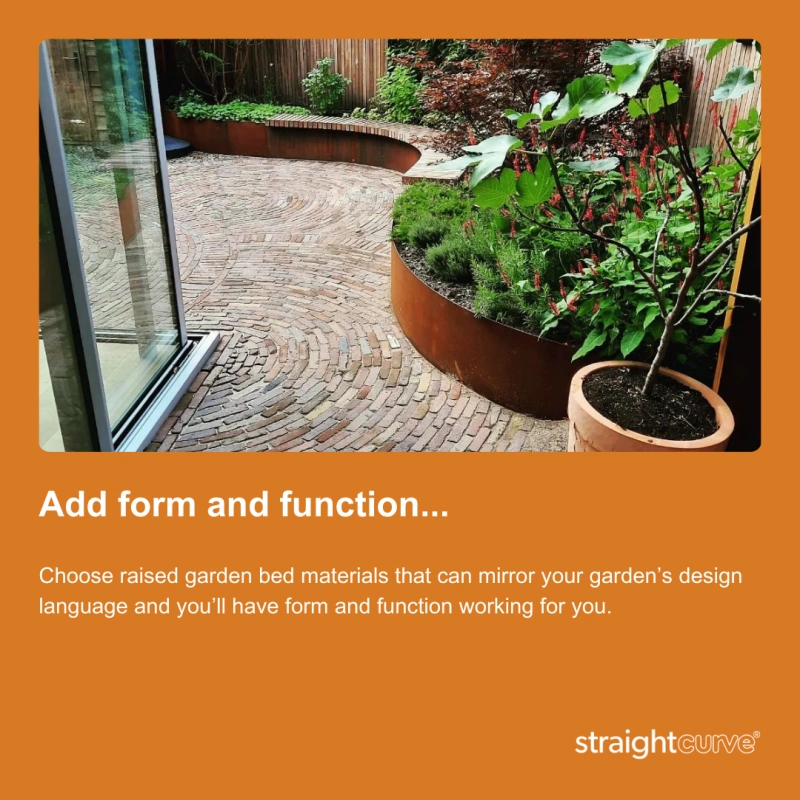
Planting: How To Create Optimal Growing Conditions.
A big part of the appeal of raised garden beds is that provided you set your beds up appropriately, you can grow almost anything. Whether you want to grow fruits or flowers, herbs or root vegetables, natives or succulents, ornamental grasses, or tropical trees – you can do all this and more.
To ensure optimal growing conditions for your chosen planting scheme it’s a good idea to design and build your raised beds around your plants.
Here’s a list of items to consider to get the best results:
1. Pick your spot – Somewhere with plenty of sunlight, protection from wind, and access to a water source (if you’re not adding reticulation).
2. Make a watering plan – If you can’t automate your raised bed watering (e.g. via retic) make it convenient (near an outdoor tap or within reach of your hose) so you’re more likely to do it.
3. Don’t go too big – Build your beds so that you can easily reach into them to plant, weed, water, and pick your crop without having to strain or even worse, stand in the beds (which will compact your soil and potentially damage plant root systems).
4. Pick materials that suit your plants – If you’re planning to eat what you grow, make sure you build your raised beds using chemical-free materials that won’t leach into your soil. Things like treated timber or old tyres are best avoided for these reasons.
5. Use soil most suited to what you’re growing – Loamy soils are widely regarded as the ideal soil type for most plants, but if you’re growing something that prefers a different mix, tailor your soil to suit.
6. Leave room for growth without cramping – it can be tempting to overplant when you first get started but remember to leave plenty of room for your plants to grow without overcrowding each other.
7. Remember to mulch – Top-dressing your raised beds with a layer of mulch is a great finishing touch not only because it looks good, but also because it helps keep weeds in check and helps retain moisture (reducing evaporation).
- Action point: Add this to your project planner as a quick checklist to cross-check.
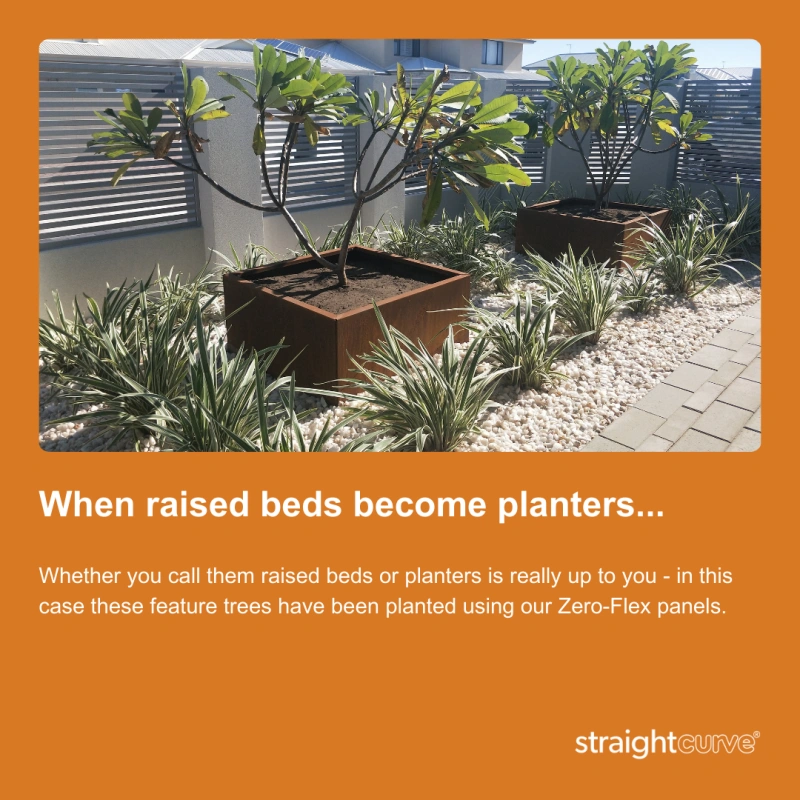
Location: Where Should I Install My Raised Bed?
Part of the appeal of raised garden beds is that you can place them almost anywhere; on a concrete slab, around your backyard pool, in a garden corner, on a balcony, or even on a repurposed kitchen trolley. That said, it’s important to choose a location that will offer optimal conditions for whatever you intend to plant in your beds. Here are some key factors to consider:
Sunlight: If you’re going to grow vegetables, most will need 6-8 hours of direct sunlight every day, so make sure the location you’re considering provides that.
Wind protection: Consider whether the plants you’ll be growing will need protection from hot or cold winds. Whilst a little breeze is a good thing, being overly exposed to strong wind can rapidly dry out soils and burn leaves.
Soil quality: If you can, choose a location with naturally well-draining soil or look at ways to improve the quality of the existing soil. Whilst you’ll be adding fresh soil in a raised bed, it’s a good idea to consider the impact of your underlying soil on drainage and root growth.
- Action point: In your project planner make a note of your preferred locations based on space available, sunlight, wind, and soil conditions. Make a rough sketch of your proposed bed, including dimensions. This will help you when it’s time to order materials or brief a landscaper.
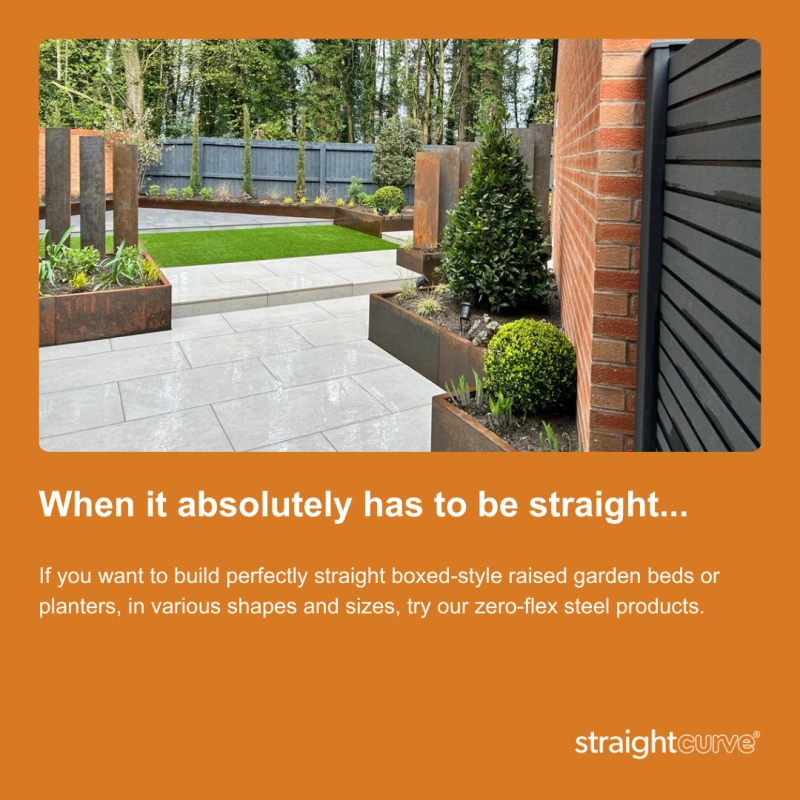
Sizes, Shapes, and Styles.
Raised garden beds come in a variety of shapes, sizes, and forms, allowing you to choose the style that best suits your needs and preferences. Some popular options include rectangular beds, square beds, circular beds, and even tiered or stacked beds.
1. Rectangular Beds – are the most common choice due to their simplicity and versatility. They can be easily customized to fit any space and can range in size from small herb gardens to large vegetable plots.
2. Square Beds – are another popular choice, especially for smaller spaces or when multiple beds need to be arranged in a grid pattern. They offer a compact and organized look, making them aesthetically pleasing.
3. Circular or Curving Beds – add a unique and decorative element to your garden. They can be a focal point in your outdoor space and are particularly well-suited for flower gardens, smaller ornamental plants, or feature trees.
4. Tiered or Stacked Beds – are a great option for maximizing space and creating visual interest in your garden. They consist of multiple levels, allowing you to grow different types of plants in each tier. This design is especially useful for gardens with limited space or uneven terrain.
When choosing the style of your raised bed, consider factors such as the size of your garden, the amount of space available, and the overall aesthetic you want to achieve. It’s also important to consider the practicality and functionality of each style in relation to your gardening goals. If you intend to grow edibles, make sure you size the beds such that you can easily reach all parts of the bed without straining or having to get into the beds.
- Action point: What size, shape, and style would be best suited to your garden? What would physically fit in your useable space, what would look good, and what would be most practical? Make a note under this heading in your project planner to help shortlist your options.
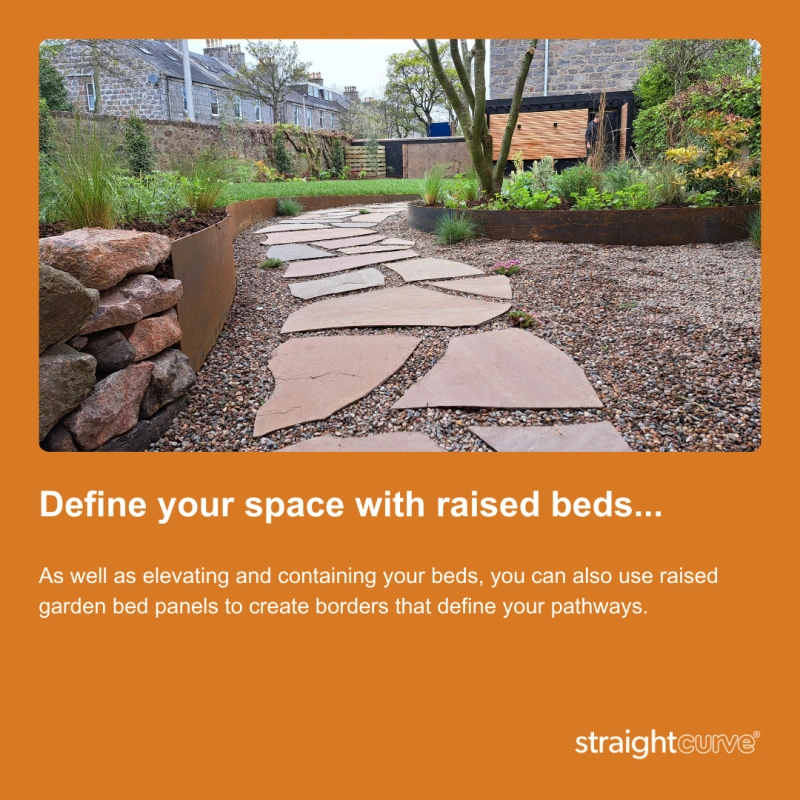
Soil Types: What Are The Best Soils For Growing Plants In Raised Beds?
One of the biggest advantages of creating raised garden beds is that you can customise the soil in them to create the perfect conditions for your planting scheme. So what kind of soil should you use for the best results? The answer is, it depends on what type of soil is already in your garden, and on what you’re planning to plant in your beds.
If you’re planning to grow edibles like fruit, vegetables, or herbs a well-balanced mix of loamy soil enriched with compost and manure is often considered the gold standard. On the other hand, if you’re planting Australian natives, a sandy soil mix will suffice.
You may be able to repurpose (and add to) the soil you already have in your garden or you may need to create a completely new soil profile. To find out which soils would be most suited to your project, talk to the people you’re sourcing your plants from.
In the meantime, here’s a summary of the kinds of soils typically found in Australian gardens:
Sandy soil: This soil type has a coarse texture and provides exceptional drainage, which is great for certain plants (natives) but can also cause it to dry out quickly. Though easy to work with, sandy soil may need more regular watering and the addition of organic matter to retain moisture and nutrients.
Silty soil: This soil type has a soft feel, retains moisture, and is naturally more fertile than sandy soil. The downside is that this soil type can compact easily and therefore needs to be worked to keep it loose and also benefits from added organic matter.
Clay soil: This heavy (and usually densely compacted) soil type has good moisture retention, but hinders root growth and has poor drainage. Turning clay over with a mix of compost and sand can improve its structure for gardening by enhancing aeration and drainage.
Loamy soil: Often considered the gold standard for gardening (especially for growing vegetables), loamy soil is a balanced mix of sand, silt, and clay. Similar to its sandy cousin, this kind of soil also offers excellent drainage but is also packed with nutrients and does a better job of retaining moisture.
- Action point: Make a note in your project planner to find out what type of soil you already have in your garden and which soil type would be best suited to what you want to grow.
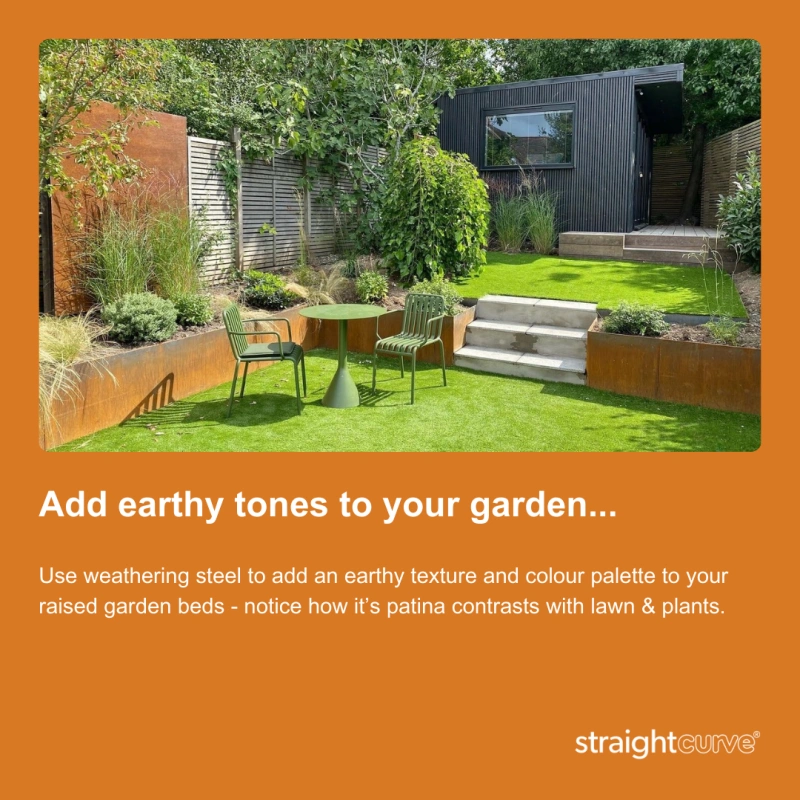
What Are The Best Materials For Building Raised Beds?
Raised garden beds can be made from a variety of materials, each with its advantages and disadvantages. Here are some common options:
1. Timber: Wood is a popular choice for building raised beds due to its natural appearance and relative affordability (depending on the type you use). It can also be easier to work and require less skill than some other options. Softwoods such as redwood and cedar are a good choice since they’re easy to work with whilst being resistant to rot and insects. Treated pine is a cheaper option that’s resistant to termites, but is best avoided if you plan to plant edibles as it can contain harmful chemicals (such as arsenic) that can leach into your soil.
2. Limestone blocks: Limestone blocks are another durable option for raised garden beds. They provide a sturdy structure and can be stacked to create multiple levels. However, they can be more expensive, heavier, and require more skill to work with compared to other materials.
3. Stone and brick: While these permanent structures require more commitment, they are incredibly durable and can be a beautiful addition to any garden. Like Limestone, however, they can be costly and require a level of skill to build properly.
4. Composite materials: Composite materials, often made from recycled plastics, offer a lightweight alternative to wood for raised garden beds. They are durable and resistant to rot and pests. On the downside, composites can be costly and sometimes look quite artificial.
5. Metal: Metal raised garden beds, such as those made from galvanized steel, offer durability and a sleek, modern look. Meanwhile, weathering steel (also known as Corten) offers a more natural or rustic look as it develops a rusted patina. Galvanised and Weathering steels are resistant to rot and pests, can last for many years, and be easily shaped into beautifully curving beds, tree rings, terraces, and steps. They are also among the more expensive materials,
- Action point: Consider which materials would be best suited to your project based on what you intend to grow, what you like the look of, how long you want your beds to last, and what you’re prepared to spend.
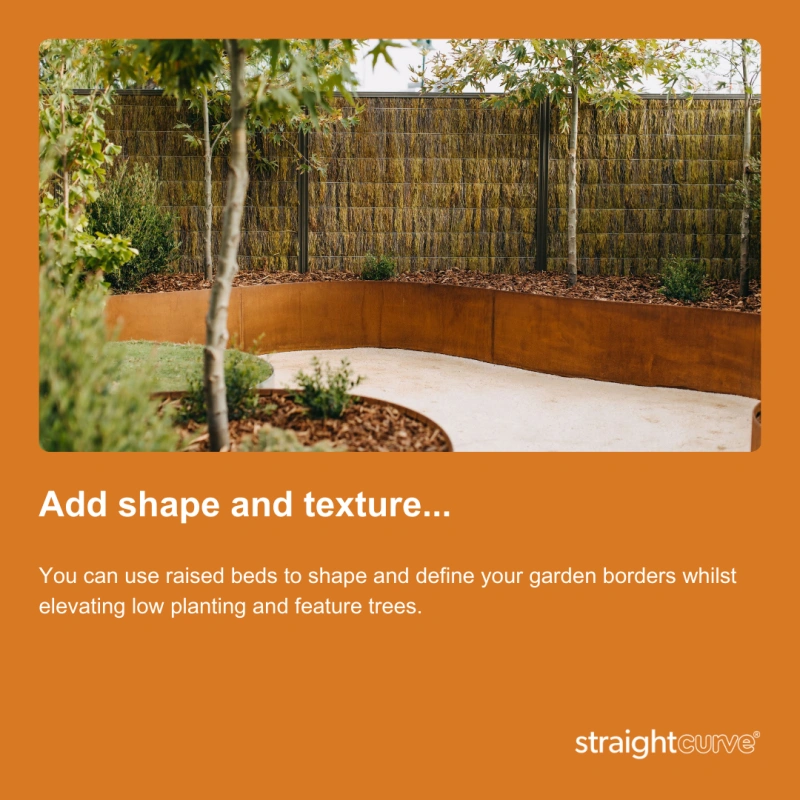
Metals: Which Metals Are Best For Building Raised Beds?
Raised garden beds built with metal panels are becoming increasingly popular for a variety of reasons. Compared to other high-quality material options such as bricks, blocks, and stone they can be more cost-effective to buy & build and likely to last as long, if not longer. But not all metals perform the same, especially when exposed to the elements – here’s an overview of the different metals and their suitability for use in raised garden beds:
– Corrugated Steel – Raised beds constructed with corrugated steel are a very durable option that will last much longer than most timber equivalents. They can however have sharp edges (which can be a hazard if not addressed) and be prone to rusting (if not coated with either zinc, paint, or powder coat). This wavy style of steel also creates a particular look which may or may not be to your liking.
– Mild Steel – This type of steel is cheaper but not long-lasting. Mild steel is prone to rusting which means it will degrade and fail much faster than other metals. This is not the best option if you want to build a raised bed that will last for many seasons.
– Galvanised Steel – This kind of steel is coated with zinc to prevent the formation of rust. This makes it incredibly durable and very well suited to coastal environments where other metals are more likely to corrode in salty air. Galvanised steel creates a very contemporary look and has the added benefit of being paintable.
– Weathering Steel – This kind of steel is sometimes referred to as corten (or Cor-Ten per the trademarked brand name). Weathering steel is so called because it oxidizes and develops a protective rusted patina, through exposure to the elements. Though less suited to coastal gardens or those watered with acidic bore water, this type of steel is popular in garden design since it has a more natural, rustic appearance that blends well with the natural environment.
– Powdercoated Steel – Among the most durable and versatile of all variants, powder-coated steel is incredibly durable (if sourced from a quality supplier) and is often available in a range of colours. Raised garden beds made with a high-quality flexible powder coat, can be shaped & curved without damaging the coating. On the downside, lower-quality powdercoats can be susceptible to cracking which can negatively affect the aesthetic and longevity of the material.
- Action point: If you like the look and the characteristics of metal raised garden beds make a note of which type would be most appropriate for your project. Note these material options in your project planner doc so you can research the options and talk to a dealer about their suitability for your garden.
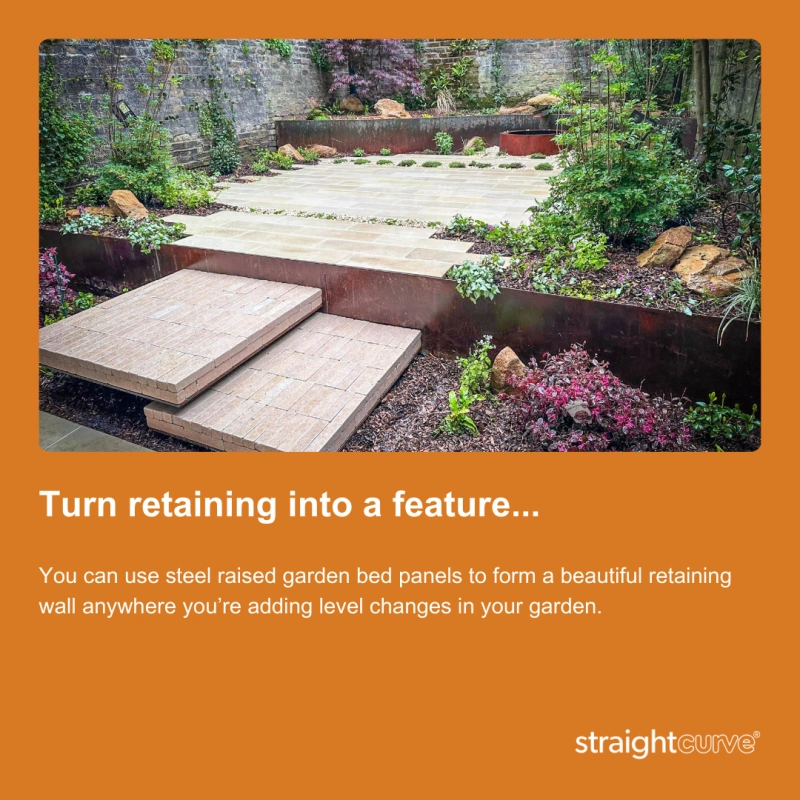
Construction Methods: What Are My Options?
When it comes to building raised garden beds, there are various construction options to consider. Here are a few popular choices:
1. DIY Raised Garden Bed Kits: These kits typically include pre-cut and pre-drilled materials, making it easy for homeowners to assemble their own raised garden beds. They often come with step-by-step instructions and can be a cost-effective option for those who enjoy DIY projects.
2. Custom-Built Raised Garden Beds: For those who prefer a more personalized and customized option, hiring a professional to build custom raised garden beds is a great choice. This allows for specific dimensions, materials, and designs to be tailored to your preferences and garden space.
3. Repurposed Materials: Another option is to use repurposed materials such as old pallet boards, bricks, or reclaimed wood to build your raised garden beds. This can be a sustainable and budget-friendly option that adds a unique touch to your garden.
4. Modular Raised Garden Bed Kits: If you’re looking for a quick and easy installation option, raised garden bed kits are available in various sizes and materials. Where more standard DIY kits are usually limited to certain fixed sizes and shapes, modular kits allow gardeners to create semi-customised orders and build beds that are more tailored to the project. Modular kits typically include all the necessary components, such as steel garden edging, corner connectors, and screws, making it a hassle-free option for creating raised semi-custom garden beds.
Each installation option has its advantages and considerations. DIY kits are great for those who enjoy hands-on projects and want to save money. Custom-built options allow for more flexibility in design and can be tailored to specific needs. Repurposed materials offer a sustainable and unique look to your garden. Raised garden bed kits provide a convenient and quick solution for those who want a hassle-free installation process.
- Action point: Make a note of which approach would best suit your needs as this may influence what kind of raised bed you opt for.
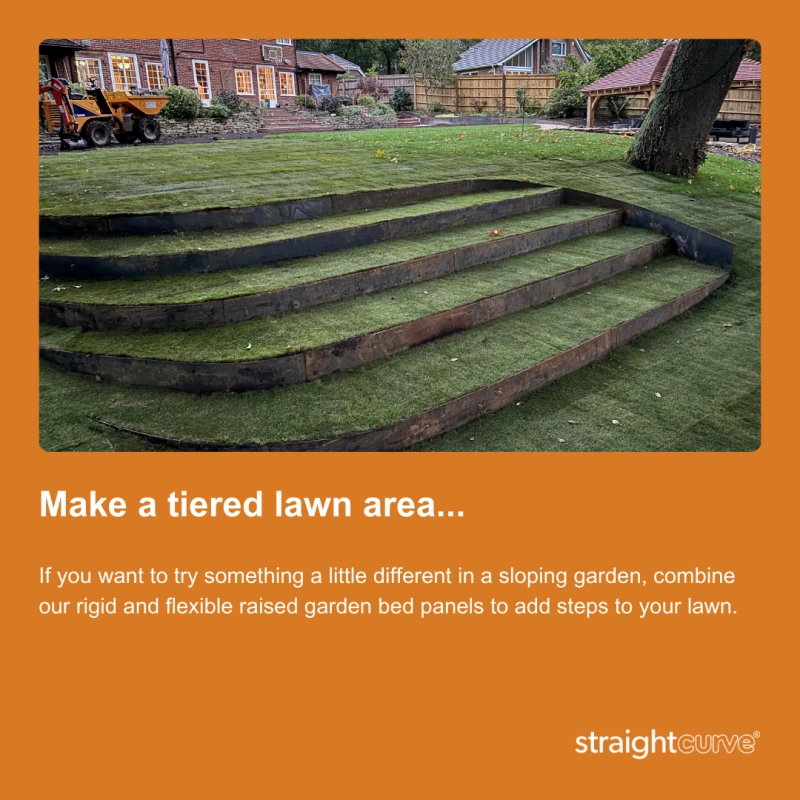
General Considerations For Building Raised Garden Beds.
Before choosing an installation option, it’s important to consider the following:
1. Size and Space: Determine the size of your garden bed based on the available space in your yard. Consider the dimensions that will work best for your needs and the plants you wish to grow. Building a raised garden bed requires careful consideration of several factors. Firstly, you need to determine the size and space available in your yard. This will help you decide on the dimensions that will work best for your needs and the plants you want to grow. Keep in mind that the size of your garden bed will also affect how much soil and compost you’ll need. Another important factor to consider is the location of your raised garden bed. Choose an area that receives adequate sunlight and is easily accessible for watering and maintenance.
2. Materials: Decide on the materials you want to use for your raised garden beds. Options include wood, metal, plastic, or a combination of materials. Consider factors such as durability, aesthetics, and sustainability when choosing the materials.
3. Soil and Drainage: Ensure proper soil and drainage for your raised garden bed. Choose a high-quality soil mix that is suitable for the plants you plan to grow. Consider adding compost or other organic matter to improve fertility and drainage. Additionally, make sure your garden bed has adequate drainage to prevent waterlogging and root rot.
4. Maintenance: Consider the maintenance requirements of your chosen installation option. Some materials may require regular sealing or painting, while others may require minimal maintenance. Consider your time and resources available for maintenance when choosing the materials for your raised garden beds.
5. Budget: Determine your budget for building raised garden beds. Different installation options and materials will vary in cost, so it’s important to consider your budget constraints before making a decision.
Once you’ve considered these factors, you can choose the installation option that best suits your needs and preferences. Whether you decide to DIY with repurposed materials, opt for a raised garden bed kit, or custom-build your own, make sure to carefully plan and execute your project. With proper consideration and planning, you can create beautiful and functional raised garden beds that will enhance your outdoor space and provide a fruitful gardening experience.
- Action point: Now you have a good understanding of what goes into planning your raised garden beds, make a note under each of the above headings in your project planner.
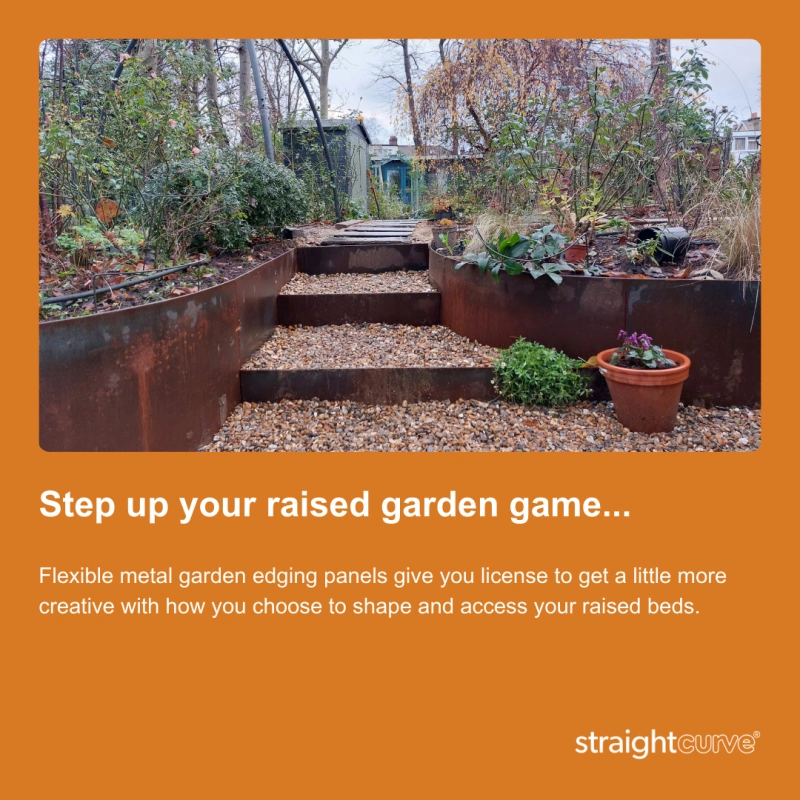
Checklist: How To Pick Your Perfect Option.
As you’ve seen, there are so many options when it comes to raised garden beds – it could feel a little overwhelming to decide which is the perfect option.
But here’s the thing – there is no one universally perfect option – it’s about finding the option that works best for you. Which is about being clear on certain things like; the reason you’re building raised beds in the first place, whether you’re chasing pure functionality or if you’re looking for a particular aesthetic, what your budget is, whether you want to build a permanent structure that lasts for years, or if something more temporary would suffice.
To find the raised garden bed option most suited to your needs, organise your thoughts using a checklist like the one shared in your project planner
Here are some more questions to ask yourself:
– Are you chasing a particular look & feel?
– Do you have a material preference?
– Are you going to grow edibles?
– Are you concerned about chemicals leaching into your soil?
– Do you have a limited budget?
– Do you have termites in your area?
– Do you live in a dry or humid climate?
– Will children and pets have access?
– How long do you want your beds to last and look good?
– Will these beds be highly visible?
– Should the raised beds improve the curb appeal of your property?
– Will you use these beds to create level changes on a flat or sloped garden?
– Do you want a grid of stand-alone square beds, circular planters, or a staggered series of curving tiers?
– Do you want to reposition your raised beds or fix them in a permanent spot?
– Do you want to get hands-on with this project or would you prefer to leave it to a professional?
- Action point: Make a note of your answers to the above questions (and any others that come up for you) in your project planner.
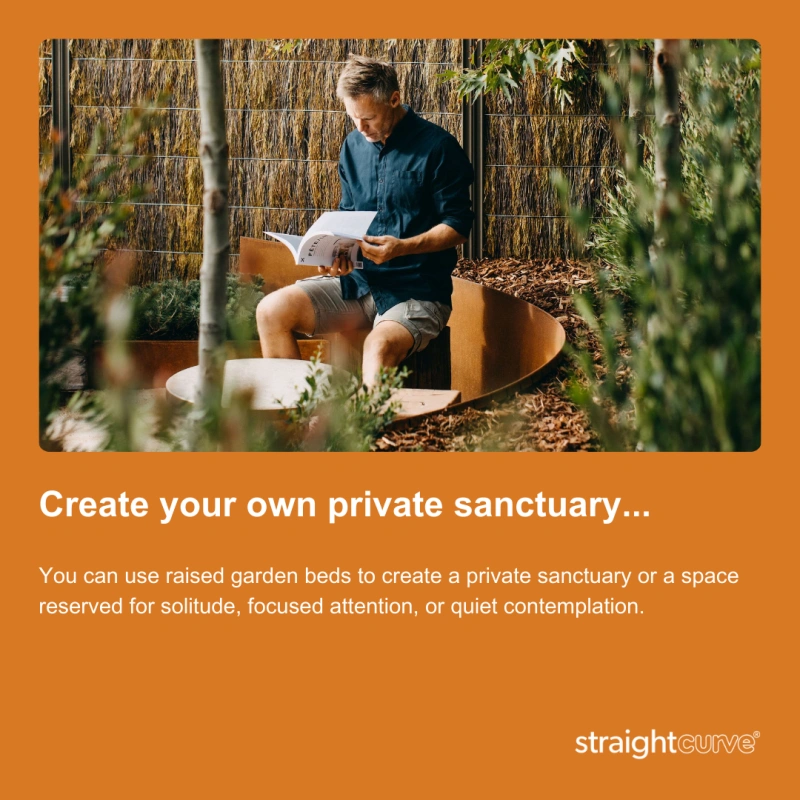
How To Build And Install A Raised Bed.
The exact approach you use to build your raised beds will depend on what kind of beds you choose, whether you’re working on level or sloping ground, whether you choose to DIY or employ a builder or professional landscaper. That said, here are some general rules of thumb and steps to follow:
1. Choose a location: Select a spot in your yard that receives adequate sunlight (at least six hours per day) and has good drainage. Avoid areas with large tree roots or potential flooding.
2. Determine the size and shape: Measure the available space and decide on the dimensions for your garden bed. Keep in mind that you should be able to reach the center of the bed from all sides without stepping on the planting area.
3. Gather materials: Purchase or gather the necessary materials for your raised bed, such as untreated wood boards, cinder blocks, or other durable materials. Make sure the materials are free from chemicals that could harm your plants.
4. Prepare the area: Clear the ground where the bed will be placed, removing any existing grass, rocks, or debris. If desired, you can line the bottom of the bed with weed fabric to further prevent weed growth.
5. Build the raised bed: Assemble the materials to create the frame of your bed. Secure the corners with screws or nails, ensuring the structure is stable and level.
6. Add a liner and fill with soil: Line the bottom of your raised bed with cardboard and newspaper to create a permeable barrier between the ground and the soil you’ll add. Fill the raised bed with a mixture of soil, compost, and organic matter. Aim for a loose and fertile soil mixture that will create optimal growing conditions.
7. Begin planting: Once your bed is filled with soil, you’re ready to start planting! Choose vegetables, herbs, or flowers that suit your preferences and climate. Follow recommended spacing and care instructions for each plant to avoid overcrowding.
8. Maintain your garden: Regularly water your plants, remove weeds, and provide necessary nutrients to ensure healthy growth. Raised beds often require less water compared to traditional gardens, so monitor the moisture levels carefully.
- Action point: In your project planner, make a note of the steps you’ll need to take to build your preferred raised beds – feel free to copy the above and adjust as necessary.
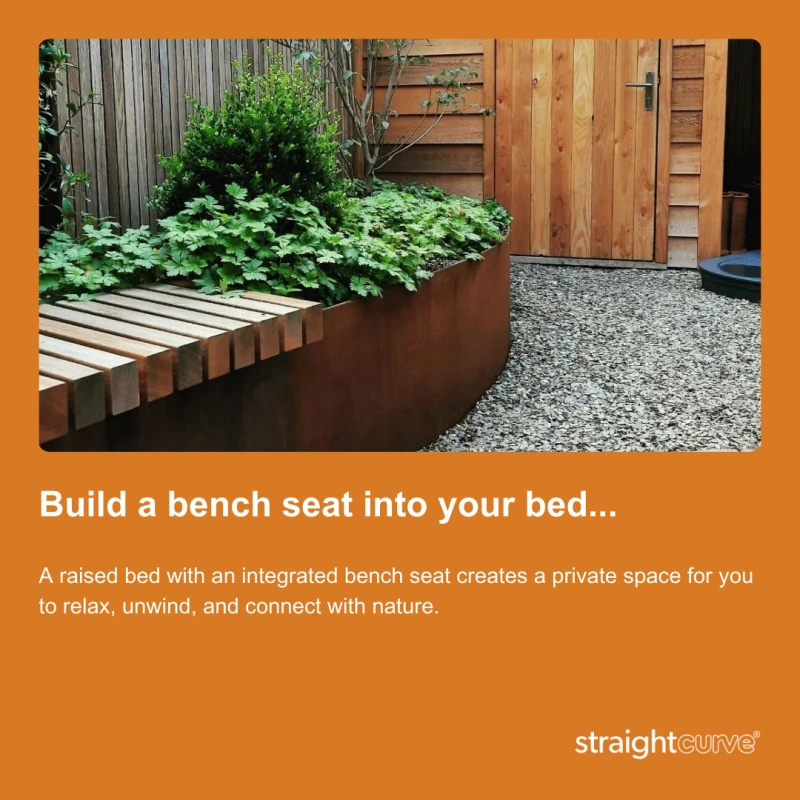
Why Do People Choose Straightcurve Steel Raised Garden Beds?
Whether you decide to build your raised beds yourself or use a professional, if you like the look & feel of galvanised or weathering steel, you might like to consider building your beds using Straightcurve products. Here are 10 reasons Straightcurve steel raised garden beds stand out from other off-the-shelf products:
1. Extremely High Quality: The raised garden beds from Straightcurve are made from high-quality steel with a galvanized or weathering steel finish. Both types of steel are extremely hard-wearing and can last for 10 years or more. They are precision-engineered to achieve a stylish, high-end aesthetic.
2. Quick to Connect: Our raised garden bed panels are designed to fit neatly together via discreet joining systems, creating beautiful, almost seamless joins.
3. Aesthetically Pleasing: Our weathering steel raised garden beds have a rustic look that changes over time as the natural patina develops. Meanwhile, our galvanised steel products will lend a contemporary to your beds. All our raised bed products are designed with rolled edges for a smooth and safe profile.
4. Easy to Shape by Hand: If you want to create circular or curved garden beds, our Straightcurve Flex 240mm, 400mm, and 560mm range is easy to shape by hand, giving you almost unlimited flexibility in design and installation.
5. Purposefully Designed: Our raised garden bed systems are specifically designed for quick and easy installation with basic household tools. They are pre-drilled and prepared for self-assembly.
6. Hard Wearing: The raised garden beds are rock-solid and won’t budge once installed, thanks to our unique joining and fixing systems.
7. Adaptable to Onsite Changes: The raised garden beds can be easily adapted to onsite changes, making them a versatile choice for various garden designs.
8. Simple to Install: Straightcurve raised garden beds are expertly designed for quick and easy DIY installation – by following the instructions in our installation videos you can have your beds built in a matter of hours.
9. Suitable for All Soil Types: The raised garden beds are designed to be suitable for all soil types, ensuring that they can be used in a wide range of garden environments.
10. Ready When You Are: Straightcurve raised garden beds are stocked by our network of landscape supply dealers across Australia, so you can get started whenever you’re ready.
- Action point: If you like the benefits associated with high-quality steel raised garden bed setup, make a note in your project planner to compare the Straightcurve raised garden bed range to any other options you’re considering. Note: You’ll find more resources to help you assess the suitability of our range at the end of this article.
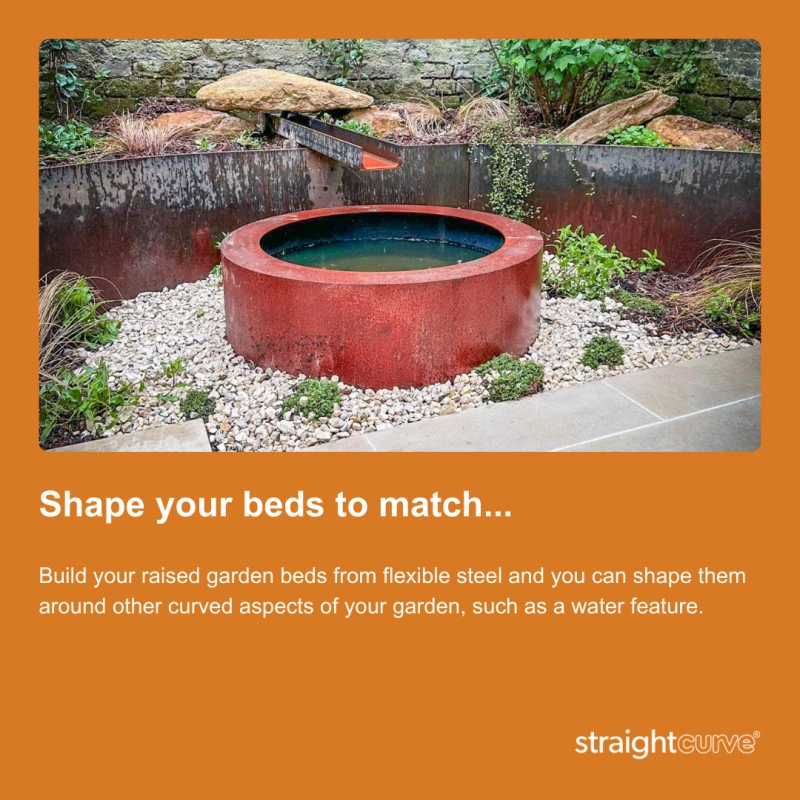
Next Steps & Recommendations:
- Decide what the purpose of your raised gardens will be: food production, elevated planting scheme, adding visual interest and level changes to a flat garden, creating tiered gardens on a sloping site, increasing your property’s curb appeal, or reducing maintenance.
- Do some online research to find examples you like the look of and get a sense of how easy to build, how costly to setup, how likely to last, and how suitable they would be for your own garden.
- Visit nearby garden centres and landscape suppliers to look for and price up some options. If our products are among those you’re considering and you’d like to talk to someone about Straightcurve raised garden bed products, reach out to your nearest Australian Dealer to talk over the options.
- Decide whether you want to build yourself or hire a professional. If you go the DIY route, talk to our dealers about what you’ll need and check out our installation videos (link). If you’re going to hire a professional, consider asking your local landscape supply store (or Straightcurve stockist) if they can recommend a professional landscaper or designer.
NOTE: If you’re a landscape professional and you’d like to find out more about our range, visit our Trade page, enquire about a PRO account, or find our nearest stockists.
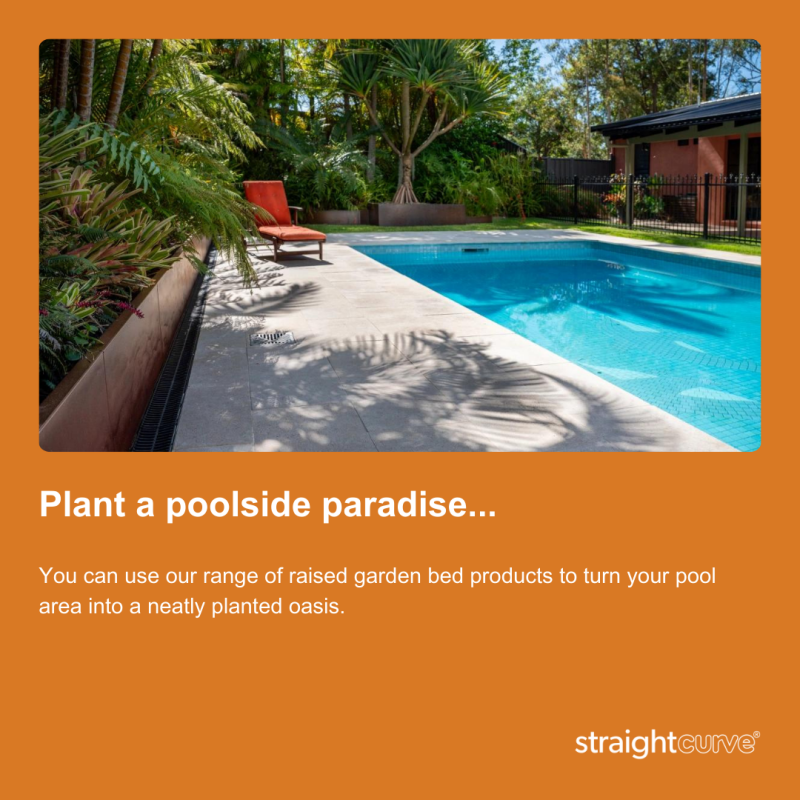
Conclusion:
I hope you’ve found this guide useful and that it’s helped you get clearer on what to consider and how to go about choosing the best raised garden bed for your needs.
Please help yourself to the resources on our website and the useful links listed below.
And finally good luck with your raised garden bed project.
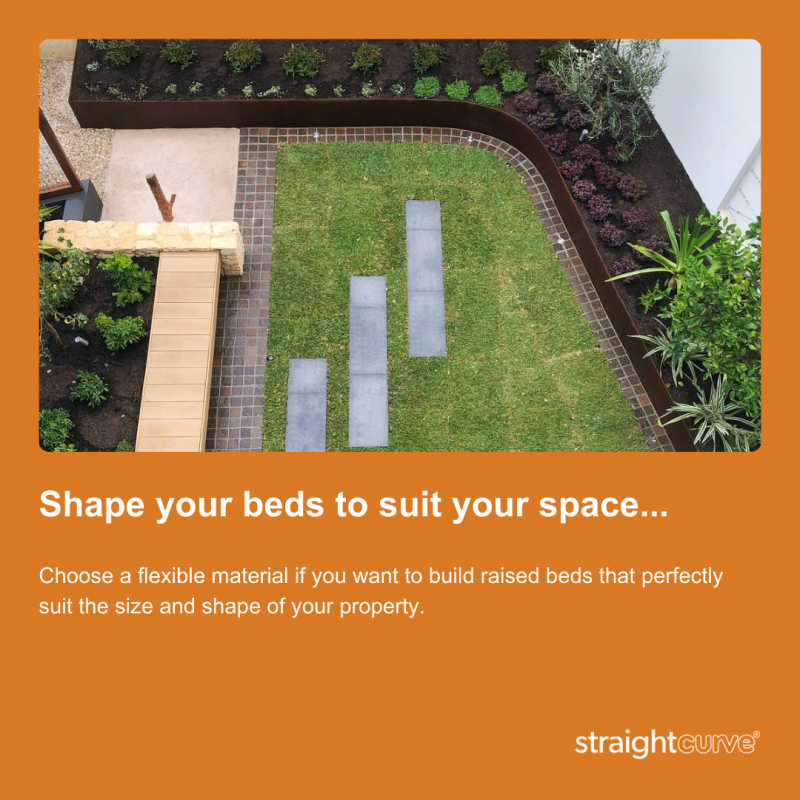
Helpful Resources:
Use the linked resources below to see whether our steel raised garden beds would suit your project:
- Download Our Product Catalogue – Download the pdf and skip to the Raised Garden Bed section.
- Check Out Our Image Gallery – Here you’ll find examples of raised garden beds created using our products.
- Introduction Video – Watch this video to see which style of product might work for your project.
- View Installation Videos – Here you’ll discover how easy it is to build raised garden beds yourself.
- Find Your Nearest Dealers – Find stockist locations and contact details on our “Where To Buy” map.
- Request Pricelist & Brochure – Submit to receive a brochure, pricelist, and stockist’s details by email.
